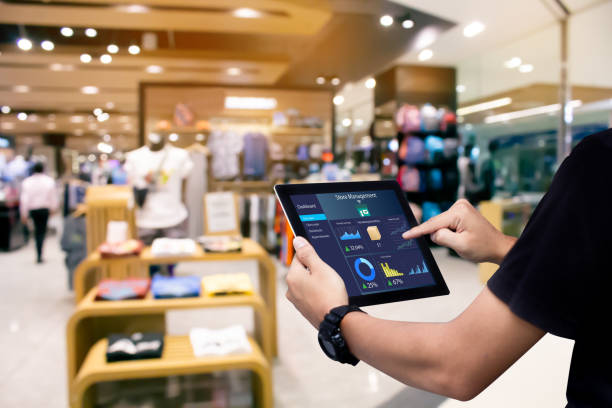"Retail Software Integration in Local Markets: What’s New in Sikanderpur & Daliganj?"
"Retail Software Integration in Local Markets: What’s New in Sikanderpur & Daliganj?"
Blog Article
The Indian retail landscape is undergoing a quiet revolution—one driven not by sprawling malls or e-commerce giants, but by neighborhood shops adopting retail software to modernize operations. From high-traffic commercial zones like Sikanderpur to traditional shopping centers such as Daliganj Market, small and medium businesses are increasingly turning to technology to stay competitive, compliant, and customer-friendly.

In this blog, we dive into the latest trends in retail software integration in two of North India’s buzzing local markets—Sikanderpur in Gurugram and Daliganj in Lucknow. Whether you’re a retailer, entrepreneur, or simply curious about the digital transformation of local businesses, here’s everything you need to know about how retail software is reshaping these commercial hubs.
???? Why Focus on Sikanderpur & Daliganj?
Both markets represent distinct profiles of local Indian commerce:
Sikanderpur, situated in the heart of Gurgaon, is a rapidly urbanizing area with mixed retail—ranging from fashion and electronics to grocery and daily essentials. It has high footfall, significant digital exposure, and growing customer expectations.
Daliganj, a historic market in Lucknow, leans more toward traditional retail formats. It features stationery shops, school supplies, clothing vendors, and general stores—many of which are family-run businesses.
Yet both share one thing in common: the need to modernize using retail software solutions that are affordable, user-friendly, and scalable.
????️ The Push Toward Retail Software Integration
Retail software is no longer optional. Rising competition from online platforms, evolving consumer behavior, and regulatory requirements such as GST compliance have made digital tools essential.
Here’s why more local vendors in Sikanderpur and Daliganj are integrating retail software:
Efficient billing and inventory management
Faster UPI/digital payments
Customer relationship tools and digital receipts
Stock forecasting and restocking alerts
GST invoicing and accounting
????️ What’s Happening in Sikanderpur?
Sikanderpur has embraced retail technology at a fast pace. Surrounded by high-income residential areas and corporate hubs, retailers in the area are catering to a digitally literate customer base. They are choosing retail software that integrates seamlessly with:
Digital payment systems (PhonePe, Google Pay, Paytm)
Barcode scanners and receipt printers
WhatsApp invoicing and SMS marketing tools
???? Key Software in Use:
Vyapar: Offers billing, inventory, and GST reports in Hindi and English.
GoFrugal: Used for advanced POS and customer loyalty programs.
myBillBook: Simple mobile-based billing and inventory solution.
???????? Case Study: Electronics Store in Sikanderpur
Mr. Anand, who owns a mobile and accessories shop, shared that his average billing time per customer dropped by 50% after using myBillBook. He also now sends digital bills via WhatsApp, which customers prefer over paper receipts.
???? Digital Trends in Daliganj Market
Daliganj has seen a gradual but steady shift from pen-and-paper ledgers to digital bookkeeping and billing software. Vendors here value solutions that are:
Easy to learn
Available in Hindi
Low-cost or free for basic use
Offline-friendly
Many shopkeepers began using retail software for GST filing support but are now exploring full POS capabilities including inventory management, barcode billing, and customer credits.
???? Popular Software Options:
Marg ERP: Especially preferred by general stores and stationery vendors.
RetailCore: For garment and school uniform shops.
Hitech Billing Software: Known for offline capability and regional language support.
???????? Case Study: School Supply Vendor in Daliganj
Rashmi, who runs a school supply shop, says that during back-to-school season, managing hundreds of items used to be a nightmare. With Marg ERP, she now tracks stock levels, reorders in time, and avoids overstocking.
???? How Integration Is Making a Difference
Here’s how the integration of retail software is reshaping operations in both markets:
1. Inventory Optimization
Retailers track fast- and slow-moving items.
Automatic alerts prevent stockouts.
Helps with seasonal demand management.
2. Digital Payments Integration
Customers expect UPI acceptance.
Software records all modes of payments in a single dashboard.
Improves transaction speed and financial accuracy.
3. GST-Compliant Billing
Integrated tax options ensure easy return filing.
Reduced errors in billing and reporting.
Vendors now stay compliant without hiring accountants.
4. Customer Engagement Tools
WhatsApp/SMS-based invoicing builds trust.
Loyalty programs and discounts can be customized.
Enables feedback collection and repeat purchases.
???? Challenges in Adoption
Despite progress, some challenges remain—especially in markets like Daliganj.
⚠️ Key Barriers:
Digital Literacy: Older shopkeepers may resist using new systems.
Cost Sensitivity: Even affordable software is sometimes viewed as an unnecessary expense.
Internet Connectivity: Fluctuations can disrupt cloud-based systems.
Training Needs: Lack of onboarding support makes first-time setup difficult.
???? Solutions and Government Support
To overcome these hurdles, companies and government bodies are taking action:
Training workshops and demo days in market areas.
Freemium models by retail software companies for easier onboarding.
Digital India initiatives to promote software adoption under MSME programs.
Regional language support for better usability in local contexts.
Report this page